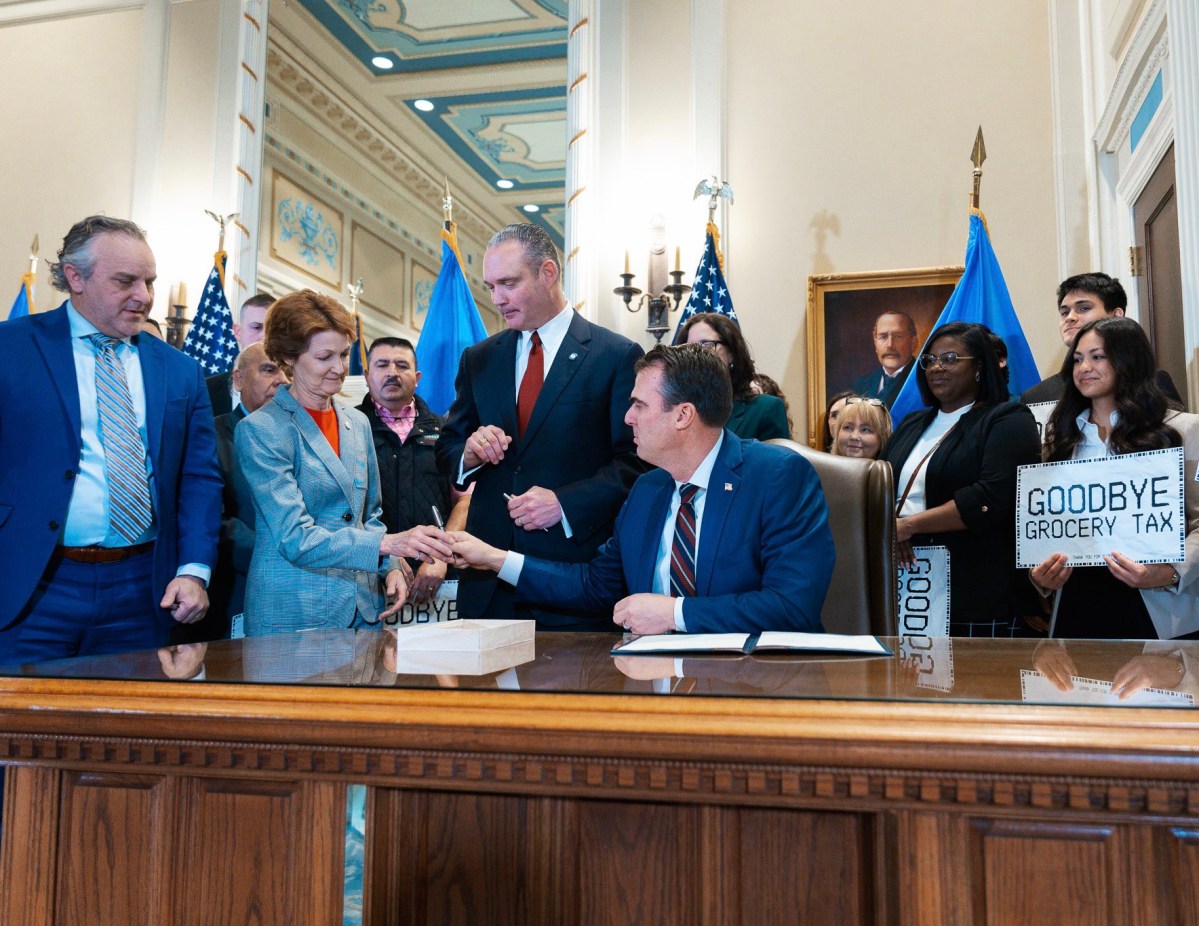|
Listen to this article here
Getting your Trinity Audio player ready...
|
In an uncommon display of bipartisan support, Republicans and Democrats alike were present on Tuesday as Governor Kevin Stitt signed the bill that will end the state’s portion of the Oklahoma grocery tax.
“It’s rare when Democrats and Republicans see eye to eye on policy issues in Oklahoma,” said Gov. Stitt on social media Tuesday afternoon. He continued, “That’s why I’m so proud that the grocery tax cut saw broad bipartisan support in the House and Senate.”
The bill was successfully passed by the Senate last week before it traveled to the Governor’s desk. Stitt has previously stated he would pass any tax cut bill that made its way to his office.
“I am pleased Governor Stitt has signed the elimination of the state sales tax on groceries into law,” said Rep. Cyndi Munson, D-OKC, in a press release Tuesday. “For the past several sessions, including special sessions, the House Democratic Caucus has filed and authored legislation to eliminate the state sales tax on groceries to provide immediate tax relief for working Oklahomans each time they go to the grocery store.”
State legislators have attempted to cut Oklahoma’s grocery tax in the past, but it failed during last year’s regular session.
Senate Pro Tempore Greg Treat previously stated that the Senate will support only this tax cut this year. “To ensure state services and recent critical investments in education and infrastructure remain intact in the short term, there is no way to do more at this time,” Sen. Treat said last week.
The state’s portion of the Oklahoma grocery tax rate currently stands at 4.5%. Once the law goes into effect it will drop to zero. The average Oklahoman typically spends $258 a week on groceries, when the grocery tax is added that number rises to almost $270.
Rising Cost of Food
According to the USDA, grocery prices are up 1.2% in January 2024 compared to the same time last year. Oklahomans spend about 17% of their monthly income on groceries, the fourth largest amount in the nation. Financial experts don’t recommend spending more than 15% of your fixed income on food, including takeout.
Even fast food is no longer a cheap alternative to buying food at the supermarket. Financial reports show that Americans have lessened their trips to the drive-through. McDonald’s menu prices were up 5.4% when compared to prices from the previous year.
With inflation still taking its toll on the average American, many are desperate for relief.
Even highly processed foods that used to be relatively affordable are suffering. A practice known as “shrinkflation” has taken off. This is when companies don’t increase prices but provide less of the product. Frito-Lay decreased the size of Dorito bags from 9.75 to 9.25 ounces but continued to charge the same price.
Related Stories
Tax Cut Implications
Cutting taxes can have lasting effects on government revenue. Tax cuts created during the Bush administration mostly helped the wealthiest Americans and resulted in deficits in federal revenue. It also created a larger rift between income brackets.
Several states have seen a recent push to limit and cut taxes in response to rising costs associated with the COVID-19 pandemic. Between 2021 and 2023, twenty-six states have cut personal income and/or corporate taxes, something Gov. Stitt has said he would like to pursue as well. However, back in the 2010s, this had disastrous effects in Kansas.
Kansas’ Governor at the time, Sam Brownback, effectively cut taxes for the wealthiest Kansans in the hopes that it would boost new business formation and create more jobs.
The state only saw a private-sector job increase of 4.2% between 2012 and 2017. State revenue dropped drastically and the state’s Department of Education suffered. After five years of no improvement, the legislature reversed the tax cuts.


